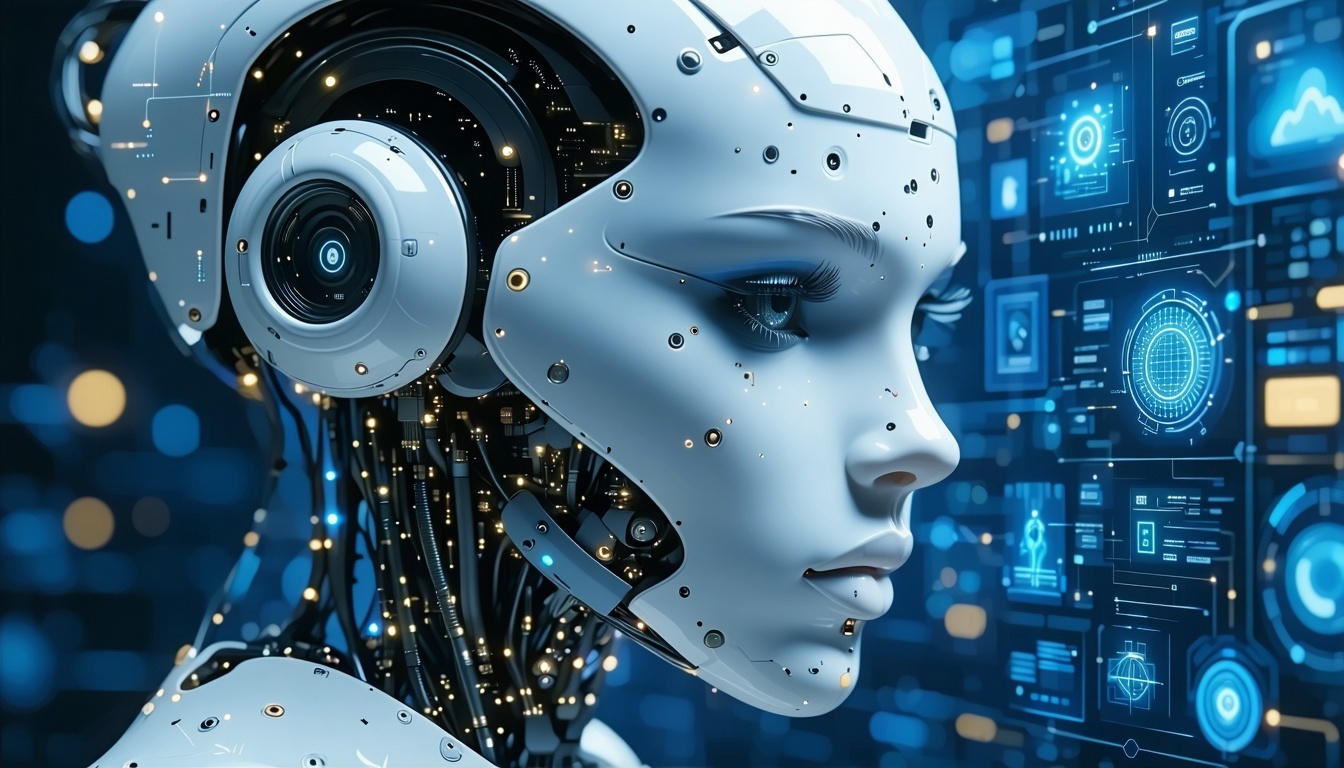The Role of AI in Shaping Future UI/UX Design

Discover how artificial intelligence is revolutionizing UI/UX design, driving innovation and personalization in the digital marketing landscape.
How AI is Transforming the Digital Design Landscape
Artificial intelligence (AI) is rewriting the rules of digital design, enabling designers to create more intuitive, responsive, and engaging user interfaces (UI) and user experiences (UX). By leveraging machine learning algorithms, AI can analyze vast amounts of data to identify patterns and trends that inform design decisions. This leads to interfaces that are not only aesthetically pleasing but also highly functional and user-centric.
One of the most significant transformations is the ability to automate routine tasks, allowing designers to focus on more complex and creative aspects of their work. AI-powered tools can generate multiple design variations, suggest color schemes, and even create wireframes based on user input and behavior data. This level of automation accelerates the design process and ensures that the final product meets the needs and preferences of its users.
Personalization at Scale: Delivering Tailored User Experiences
AI enables the delivery of highly personalized user experiences at scale. By analyzing user data, including browsing history, preferences, and behavior, AI can create customized interfaces that cater to individual needs. This level of personalization enhances user satisfaction and engagement, leading to higher conversion rates and customer loyalty.
For instance, AI can dynamically adjust the layout, content, and functionality of a website or application based on user preferences and behaviors. This ensures that each user interacts with a version of the interface that is most relevant and engaging to them. As a result, businesses can offer a more tailored and effective user experience, which is crucial in today's competitive digital landscape.
Predictive Analytics: Anticipating User Needs Before They Arise
Predictive analytics powered by AI can anticipate user needs and behaviors before they even occur. By analyzing historical data and identifying patterns, AI can predict what users are likely to do next and adjust the interface accordingly. This proactive approach to design creates a seamless and intuitive user experience.
For example, an e-commerce site can use predictive analytics to recommend products that a user is likely to be interested in based on their past purchases and browsing history. Similarly, a content platform can suggest articles or videos that align with a user's interests and consumption habits. These predictive capabilities not only enhance the user experience but also drive engagement and sales.
AI-Driven Automation: Streamlining Design Workflows and Efficiency
AI-driven automation is revolutionizing design workflows by streamlining repetitive and time-consuming tasks. Tools powered by AI can handle everything from layout generation to content creation, significantly reducing the time and effort required to bring a design to life.
For instance, AI can automate the process of A/B testing by quickly generating and testing multiple design variations to determine which one performs best. This not only speeds up the optimization process but also ensures that design decisions are data-driven and effective. Additionally, AI can assist with user testing by analyzing user interactions and feedback to identify areas for improvement. This level of automation enhances efficiency and allows designers to focus on more strategic and creative tasks.
Challenges and Opportunities for Marketers in AI-Powered UI/UX
While AI offers numerous benefits for UI/UX design, it also presents challenges that marketers must navigate. One of the primary challenges is ensuring data privacy and security, as AI relies heavily on user data to deliver personalized experiences. Marketers must implement robust data protection measures to maintain user trust and comply with regulations.
Another challenge is the potential for over-reliance on AI, which could stifle creativity and innovation. It's essential for marketers to strike a balance between leveraging AI capabilities and maintaining a human touch in their designs. Despite these challenges, the opportunities presented by AI in UI/UX design are immense. By embracing AI, marketers can deliver more personalized, efficient, and engaging user experiences, ultimately driving business growth and success.
